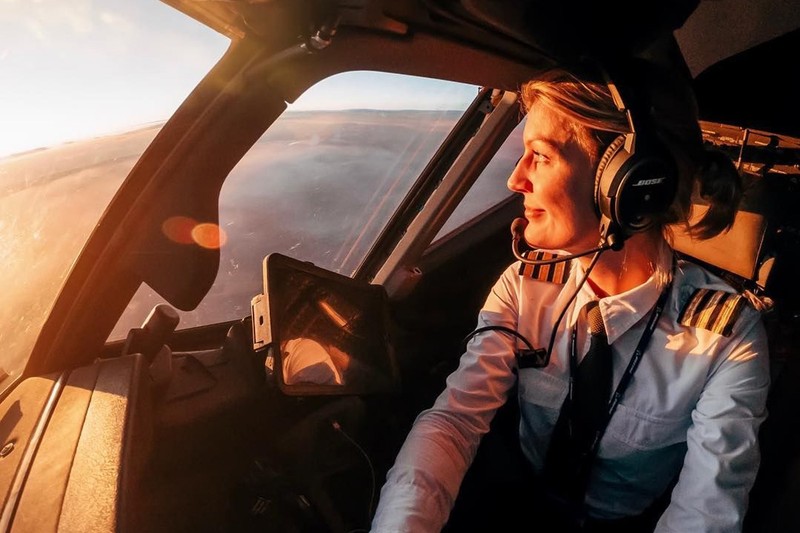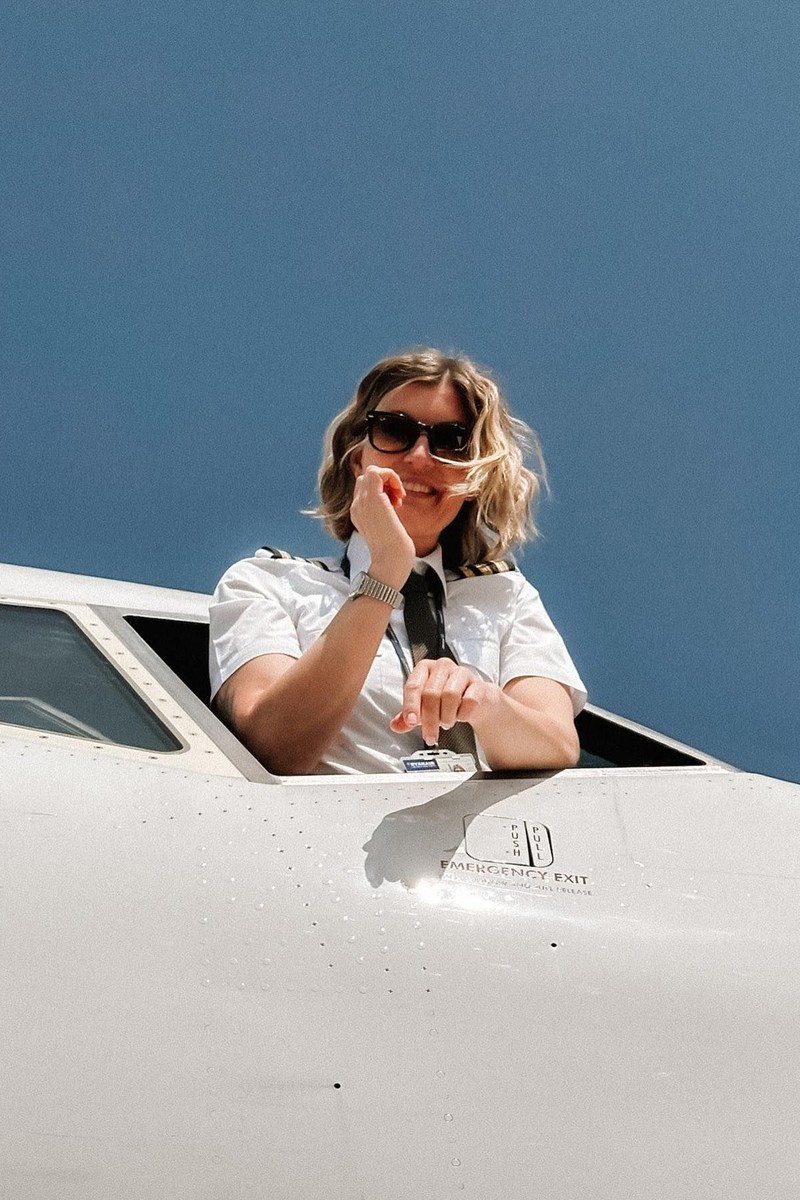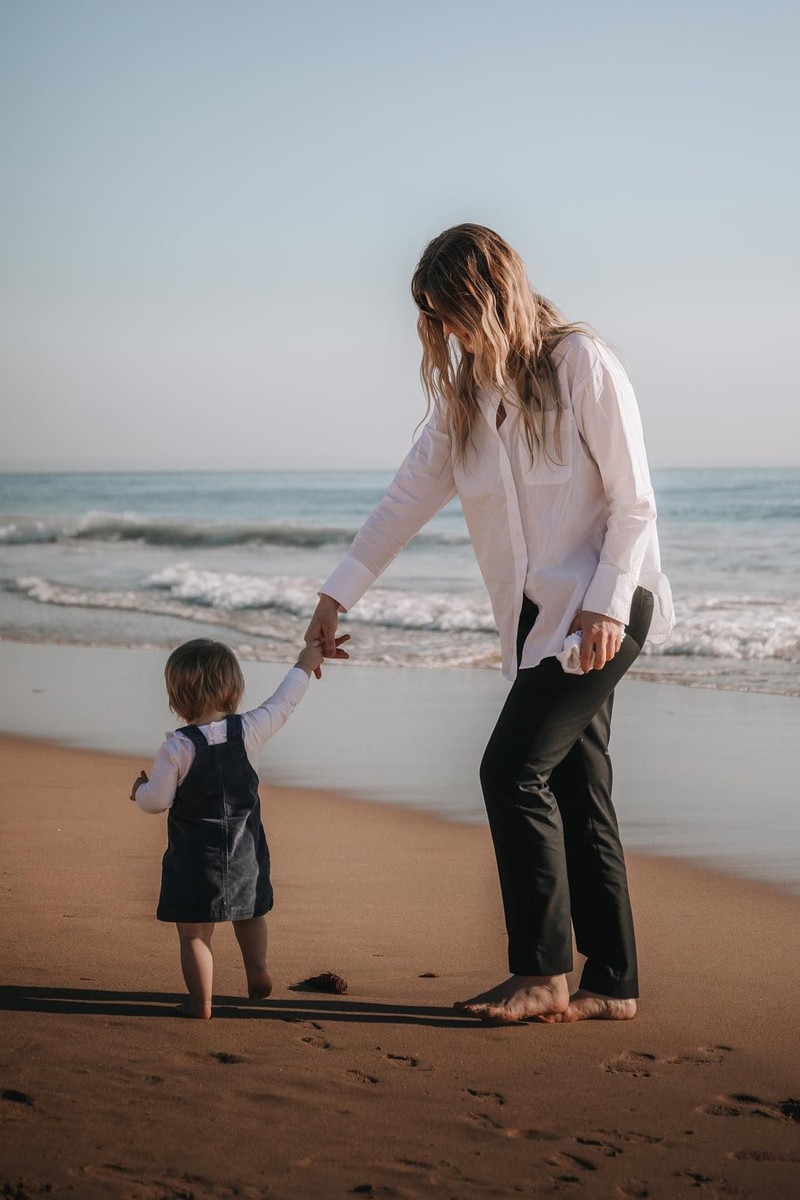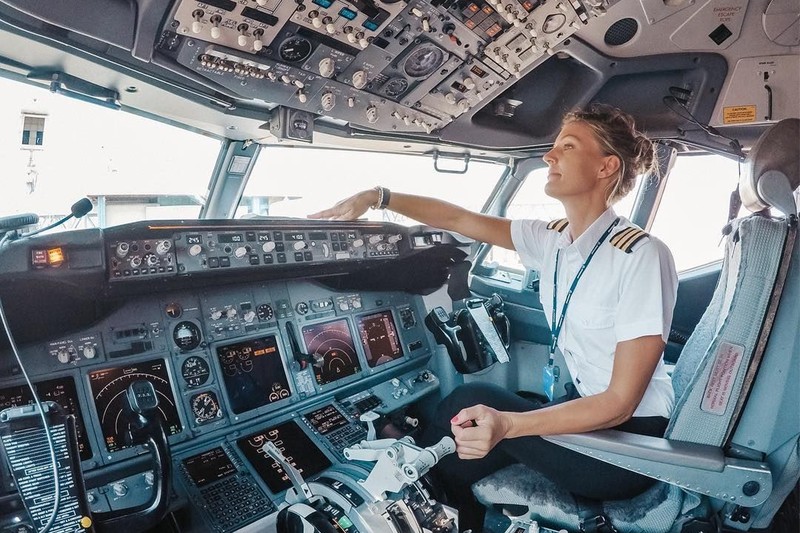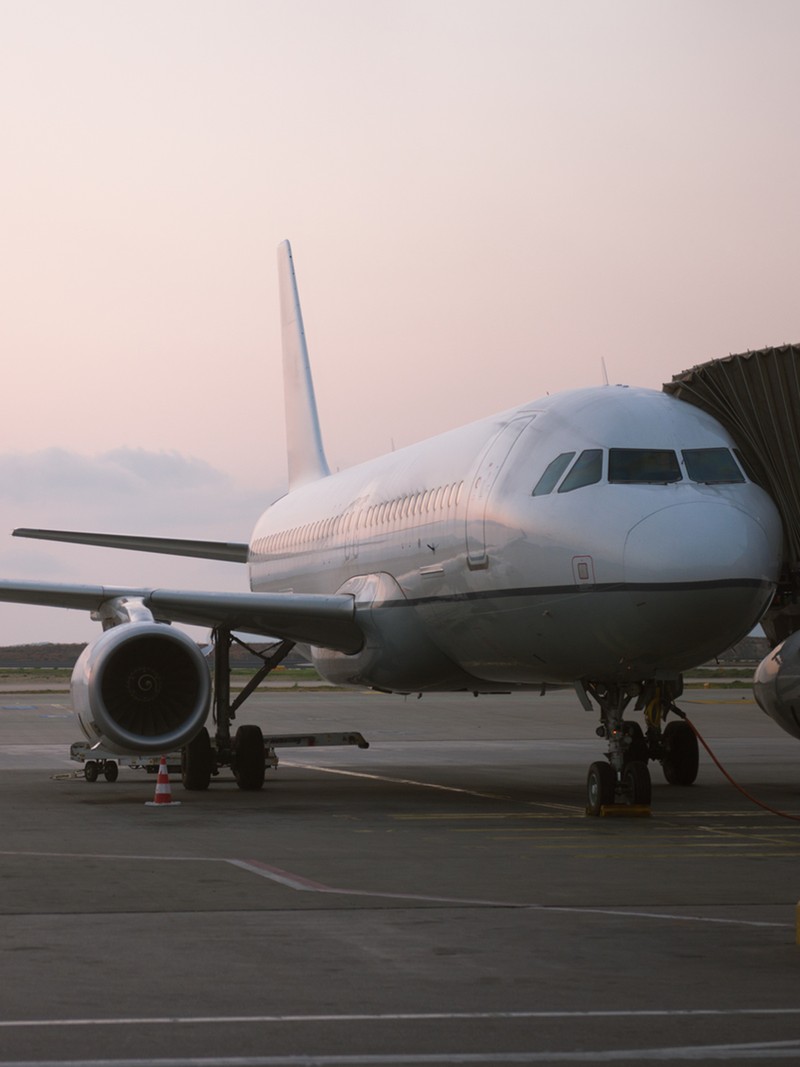
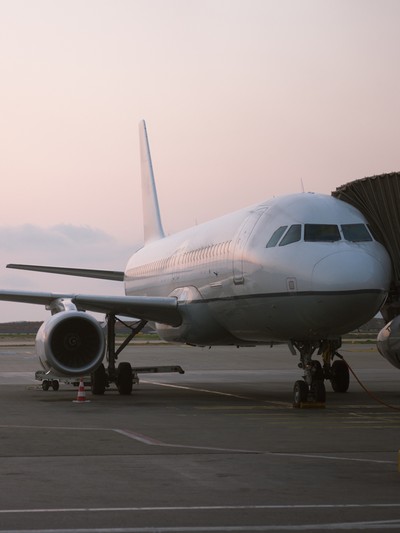
My Interesting Job: Maria Pettersson, Pilot
I was 25 when I decided I wanted to be a pilot – which is probably a lot later than other people. I never saw myself as the stereotype of what I knew a pilot to be. It just didn’t feel like an option. But my dad had always been really interested in flying – he got his private pilot’s licence when I was a child – and I think he always harboured ambitions to fly planes commercially. For him, it was just a hobby but every time we went to the airport, he was always pointing out different planes and explaining the manoeuvres they were making.
Training to become a pilot is expensive – that’s a reason I think my dad didn’t pursue it. Regardless, his passion clearly left an impression on me because I found myself looking into it in my mid-20s. Beforehand, I’d been in a pattern of working, saving and then going travelling for six months at a time, so I did the same thing – only this time I used the money to pay for the first instalment of my training. I took it on part-time so I could work at the same time and my parents also re-mortgaged their house to support me financially. Once I started working, I paid them back in full, but I was fortunate to have that security in the initial stages.
Pilot training can be done in about two years – maybe faster – if you do it full time. Because I did each step separately – known as integrated or modular training – it took me closer to three years to get all my certificates. Not many people know you also have to qualify as a private pilot first, before you move onto the commercial stage. On my first day of private pilot training, they put us in an aeroplane. It was a small little four-seater called a Diamond DA40. The instructor was the main person flying, but they had dual controls, so they could say, “Okay, your turn.” It was quite daunting but also good to be thrown into the deep end.
When you reach the stage of carrying passengers, that’s when simulation training starts. At Stansted, we have a simulator centre for Ryanair, and today I teach cadets how to fly 737s. First you complete what’s known as ‘ground school’, where you learn all the technical parts of the plane. Then you take an exam on that and the airline’s operational procedure. Then, simulator training takes about four weeks to complete 20 sessions. So, in total, it’s about six weeks. Then you get to fly an empty plane to practise take off and landings. You need to do a minimum of five take-off and landings with no passengers on board. I don’t even remember my own – I remember taking off on the first round and landing on the fifth, but that’s about it! The adrenaline was huge.
If you get through all of that, you’ve completed your base training. Then you get to fly what we call ‘on the line’. First you do some observation flights, where you sit on the jump seat and observe two pilots who are fully qualified, and watch them for a couple of days. After that, you get to take your seat, which is very exciting, but you always have a safety pilot behind you. While you're sitting three in the flight deck, there’s the line-training captain and then you have another pilot sitting behind in case anything happens or is missed and you need to swap seats. That routine stays in place for about two to three months until you’re ‘released’, albeit with certain limitations in place. For example, you still won’t be allowed to fly in certain weather conditions without a line-training captain. I can remember the day I was released – it felt like a natural next step. I was ready.
The percentage of female pilots in this country is still very low – anywhere around the 4-6% mark. There are probably a few reasons for that. First and foremost, there used to be a tradition in this country for pilots to fly commercially following a career in the military. Because of that historic trend, there just weren’t that many women in the field, which then precipitates down the generations. When I was young, I never thought women could be pilots. Plus, you feel the constraints of motherhood when you’re in a shift-based industry – especially if you’re separated like I am and having to work out co-parenting arrangements. At Ryanair, I work five days on, then four days off and we’re lucky that it’s pretty stable. I always know my working days, so I can plan my childcare around it. I don’t have family that live in this country, so my babysitter is a godsend. I don’t know how I’d do any of this without her.
Going back to work after having my daughter was quite stressful. They don't allow you to fly from the day you find out you’re pregnant, so I was off for quite a while. Some airlines do let you do some office work, but you’re not allowed to operate controls. When you’re off for so long, you have to undergo fresh training when you come back – so I had to do another 15-20 hours of simulators again, as well as line training for the first few days.
If I'm on an early shift, I set my alarm for 3:30am. I prepare my uniform the day before, along with my flight bag and then my babysitter arrives around 4:30am depending on my departure time. At Stansted we're quite lucky because we have staff parking close to the terminal, so I can go straight in. Depending on the length of the day – let's say I’m on the Tenerife flight – I can be gone for most of the day. I always get my breakfast from Pret but I save it to eat it when we’re cruising. Then I go to the aircraft at least 45 minutes before departure to set everything up. When the captain arrives, we brief the cabin crew and double check everything on the flight deck. We taxi, take off and then we reach the top cruising altitude, which is when I eat and have my coffee. It’s the most relaxing part of the flight.
At all times we have one pilot flying and one pilot monitoring. The monitoring pilot would do the paperwork for the flight down to Tenerife, while I focus on the flying. We fly with autopilot during cruise – there are regulations that say autopilot has to be engaged above certain altitudes or at certain flight levels, but we still monitor the systems and offer updates all the time. If air traffic control is giving us any additional clearance, we need to change that. So, it's a myth when people say pilots don't do anything. We're kept busy – but we can still enjoy our breakfast.
When we get to our destination, we swap. The pilot who was monitoring on the way down will fly up, and vice versa. If I’m monitoring on the way home, I do the walk around, checking the exterior check of the aircraft before we take off. We also finish the paperwork and put the systems in what we call a ‘transit shut down’. I also order the fuel and make sure there's not been any damage or any leakage on the way in. Then, I go back to the flight deck, and we brief everyone for the departure back to Stansted.
If I’m pilot monitoring on the way back, the radios will be my responsibility, as well all the paperwork. When we land back in Stansted, that’s usually me done for the day. I tend to have lunch somewhere over Portugal. I enjoy landing more than take-off – just because there’s a bit more to do. Plus, it means we’re either at our destination or at home.
Right now, men and women in my position earn the same amount of money. But if you want to be rich, I’d say this isn’t a career that’s going to make you a millionaire. It’s enough for me and my daughter to live a comfortable life, and I’m passionate about it, which is what matters. Promotional opportunities differ airline to airline but at Ryanair the promotion between first officer and captain can be as fast as four years if you don’t take time off. That’s fast – on other airlines it can sometimes take as long as 15 years. Depending on where you’re based, you’re often working with lots of different people too. When I was based in Sicily, we only had three aircraft, so I would fly with the same crew a lot. But at Stansted, I’m with different people on almost every flight. It doesn’t really matter because we have such a strong Standard Operational Procedure (SOP), which means we fly in the same way every time. Everyone is trained to the same standard, and there are plenty of company rules to fall back on. So it doesn’t matter if you’re meeting people for the first time.
I’m obviously not afraid of flying, but I’ve spoken to lots of people who are. Many of them message me on Instagram asking me to give them tips. I’m no psychologist but I’d say there are so many rules about how and when we’re allowed to fly, that we’ll only take off or land if we’re well within our limits. We also carry extra fuel on every flight so we can divert if the weather isn’t good enough at our original destination. If we need more than one attempt at landing (which is a very regularly trained manoeuvre), the weather will have to improve at least a double from what it was on the previous attempt. So, we’d most likely make two attempts, and then go to an alternate destination instead of trying and trying and trying.
In the early days, I would take my work home with me a lot. I would stew about a certain landing that I knew I could have done better. It was never unsafe, but I just wanted to prove myself. Now I've done plenty of good landings but also a fair number of heavy landings, so I find it easier to let the latter go. It happens but it’s never the end of the world. Every six months we have to go back into the simulator for training, so it’s likely you’re going to be faced with every scenario under the sun before it happens in real life. It’s all about being as resilient as you can.
One of the most rewarding parts of my job now is training new cadets. They come in with all this energy and they’re so happy to be there. The older pilots like to complain but the young ones are so excited. I also still feel that same adrenaline every time I take off. I just love flying. Plus, the views are stunning. Forget sunsets and sunrises – if you’ve ever watched the moon rise over the horizon, you’ll know it’s something you’ll never forget. I really have to pinch myself sometimes.
The first thing I say to someone who wants to be a pilot is find a local flying club. There are lots of small airfields in the UK where you can fly in smaller aeroplanes, so have a chat with the people who work there and see if you can pay someone to take you up for half an hour, just to see if you like it. You have to be passionate – it can cost up to £120,000 to train as a pilot, so it has to be something you really want to do. The studying is also hard work. There are 14 subjects to cover and, if you’re working part time, you have to be really disciplined about getting up early to study and staying up late to revise. There are a lot of sacrifices, and you’ll miss out on different things, so it must feel worth it to you. Personally, it’s the best decision I made – I can’t imagine doing anything else.
Follow @PilotMaria & visit StanstedAirport.com for more information.
DISCLAIMER: We endeavour to always credit the correct original source of every image we use. If you think a credit may be incorrect, please contact us at info@sheerluxe.com.
